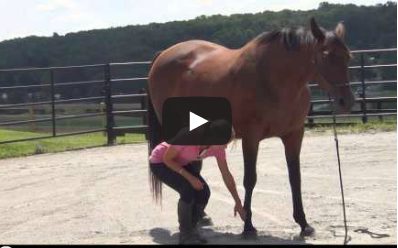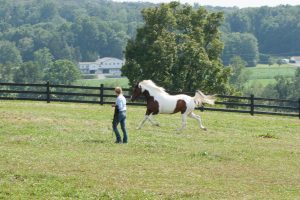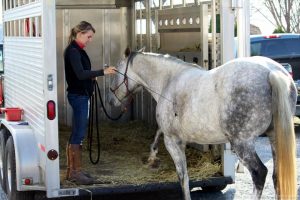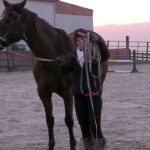This week we have something a little different for you here at the blog… in today’s video we will be discussing horse conformation. Can you look at a horse and be able to tell how he is going to move? Or where he is most likely to develop a lameness if he is in heavy work? Or ever just wonder why some horses excel in performance disciplines such as dressage, eventing, or reining, while others can’t even find their feet to jump a crossrail?
While a big part of performance is training, good conformation is what really creates an equine athlete. Even if you are only interested in light trail riding – knowing how to evaluate conformation can help you choose a horse that is more likely to stay sound and be a comfortable ride.
So the first step to evaluating a horse is to stand back and just take a look at the whole picture. Does he look proportionate and attractive? An ideally “put together” horse should appear as though you could divide his body into even thirds – shoulder, rib-cage and abdomen, and hindquarters. He should have a long well-muscled neck that ties into a long, sloped shoulder. His legs should appear straight when viewed from the front and the side. His back should be level from wither to croup (the top of his hip).
The length and angle of a horse’s pelvis is also very important. A long pelvis means increased athleticism, and the angle of the pelvis, which can be seen from the point of hip to the highest point on the horse’s rump does a lot to determine how powerful the horse’s hindquarters will be. The higher the horse’s point of hip, the less power he is going to have in his stride. A steeper pelvic angle means more power and impulsion from his hind legs.
The horse’s pasterns should be not too long so as to be weak, but not too short so that the horse as a choppy stride. The steeper the angle of the pasterns and the shoulder, the shorter and choppier the horse’s stride will feel. A choppy “up and down” stride will increase the likelihood of lameness because of the increased concussion when the horse moves. Also, any part of the horse’s body that does not line up – such as a horse that is over or under at the knee or toes out or in – this will signal an increased risk of lameness in that area. A well filled out topline with a back that is proportionate to the horse’s body, and not too long, means that the horse is better built to carry a rider and will be less likely to have back problems.
In the video below, I compare the conformation of my own two horses – Nell and Molly. Click play and enjoy!
So conformation is a topic I do enjoy, and I have only just touched on this subject with today’s post. If you have any questions or would like to hear more on conformation and how it affects movement and soundness let me know in the comments and I am happy to oblige!














5 Responses
Just discovered this on Prodigious Facebook page. Once again, you’ve simplified something I’ve had difficulty really being able to see. Anything that helps me make the most of my relationship with my forever horse is much appreciated. Thanks.
This is such a valuable topic, but could you refilm it with clear side views? The camera work wasn’t at the correct angle to view pastern angle, and with the second horse, the camera person didn’t even have the pattern in the frame when you were discussing it.
Jenn, this video is several years old now! We actually have created an entire course in this idea, taught by Wendy Murdoch, it is called the ABC’s to On the Aids! If you are interested in knowing more about the program, please send me an email at crktrainingvideos@gmail.com.
-Julia Burdy, CRK Training Community Manager
If a horse is short strides in the Rear, can that be corrected?
Rebecca, it is important to makes sure that the vet has evaluated the horse for any types of discomfort or problems before applying any training methods to ‘fix’ it!
-Julia Burdy, CRK Training Community Manager